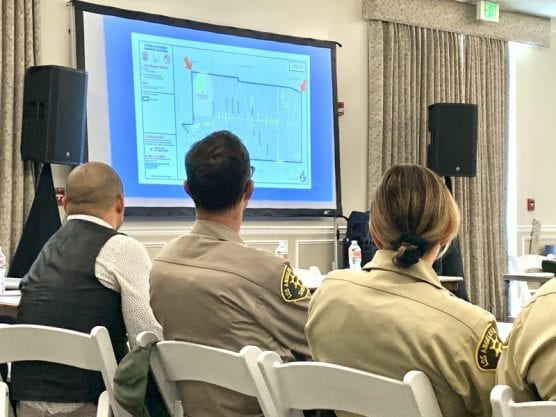Santa Clarita homeless task force members said Friday the community’s safety net must remain strong to help prevent its vulnerable population from increasing as Los Angeles County faces a 13% rise in its homeless population from that of last year, according to new figures released Friday.
The annual count, conducted in January, shows that 66,433 people countywide are living on the streets, in cars or in shelters, depicting a rise of nearly 7,500 from the 2019 point-in-time count of 58,936.
The report captures homelessness within the county before the impacts of the pandemic could be felt, measured or responded to through efforts such as rent freezes, eviction moratoriums or Project Roomkey, the statewide effort to procure housing for homeless people amid the COVID-19 outbreak, according to a news release from the Los Angeles Homeless Services Authority.
Numbers specific to Santa Clarita have not yet been released. City-level data is typically released about a month after the publication of the countywide numbers, according to Jerrid McKenna, assistant to the city manager.
But county data out now is concerning when factoring in the pandemic, according to Michael Foley, director of Bridge to Home and a member of the homeless task force. He referred to the report’s finding that two-thirds of the homeless adults were homeless for the first time last year, and 59% cited economic hardship as the cause.
“That to me was the most important part (of the report),” said Foley. “Prior to the COVID-19 crisis, we had people who were falling into homelessness, people who couldn’t afford to be housed. If you think about the subgroups of people experiencing homelessness such as those experiencing mental illness or drug and alcohol addiction or disabilities, you build a structure that helps so many people but then it becomes overwhelmed when there’s so many more.”
“We’ve got to keep the safety net strong, and then somehow we’ve got to, at a time of economic crisis, also, add to that safety net so that more people don’t fall through the cracks,” he added.
Throughout the pandemic, Bridge to Home has offered its 60 beds to the local homeless population at the Newhall Community Center and the SCV’s Project Roomkey location, a 50-bed Super 8 in Canyon Country, has operated at near capacity. The contract to temporarily house homeless at the hotel is expected to expire on July 15. Until then, “we are waiting to learn what the final outcome will be for what the county plans to do with the hotel,” said Foley.
In 2019, Santa Clarita’s point-in-time count was 256, an increase from the 156 tallies in 2018. Local experts with backgrounds in the education, faith and nonprofit sectors have repeatedly stated that these figures are far lower than the actual count for the Santa Clarita Valley area. And while the homeless task force has worked toward attaining a more accurate count and aiding the local homeless, Mayor Cameron Smyth said the pandemic could increase the local tally.
“It is concerning, given the effects of the pandemic has not been factored in. While Santa Clarita has done a great job as a community working to support those in our community experiencing homelessness and participating in Project Roomkey, we do realize that as the state comes out of the pandemic, we could see an additional increase.”
Santa Clarita is taking steps to help prevent more from falling into homelessness, he added, with the adoption of a rent protection ordinance, for example.
“Santa Clarita, at one point, was at a 20% unemployment rate and without that rent protection ordinance, we could see even higher numbers of those needing homeless services,” he said. “Adopting that ordinance, we recognize that many members of our community are suffering from lack of employment and we want to keep people in their homes as they transition back to work as the economy opens up.”
Late last month, LAHSA announced a plan to keep Project Roomkey occupants, an estimated 3,000 individuals, housed after the coronavirus crisis.
Here’s a snapshot of the countywide 2020 point-in-time count:
* Transition-aged homeless youth, those ages 18 through 24, increased by 19%.
* The number of adults 62 and over rose 20%.
* The number of veterans remained steady, with a 0.6% increase, as veterans have been the focus of most federal, state and local investment over the past decade.
* Homelessness starts rising when median rents in a region exceed 22% of median income and increase sharply at 32%.
* The county would need 509,000 units of affordable housing to meet the current demand.
* More than 22,700 people, twice as many when compared to 2015, have been placed into permanent homes, 4,257 were prevented from falling into homelessness and outreach has been completed to three times as many people (38,865).
Like this:
Like Loading...
Related





 Tweet This
Tweet This Facebook
Facebook Digg This
Digg This Bookmark
Bookmark Stumble
Stumble RSS
RSS


























REAL NAMES ONLY: All posters must use their real individual or business name. This applies equally to Twitter account holders who use a nickname.
0 Comments
You can be the first one to leave a comment.